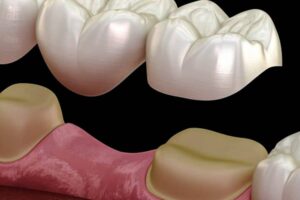Root Canal Therapy
When an infection or decay affects the nerve of a tooth, root canal therapy is required. The pulp (which is the living tissue inside the tooth), the nerves, the germs, and any decay must all be removed in order to save the tooth. The empty area is then replaced with specialized, medicated dental materials that give the tooth its full functionality back.
The preferred method of saving a tooth that would otherwise need to be extracted is to have a root canal performed on it. Many patients think that eliminating a problematic tooth is the answer, but they fail to know that doing so will ultimately cost them more money and seriously harm to any nearby teeth.
Although root canal therapy is quite effective and typically lasts a lifetime, occasionally a tooth will need to be redone due to fresh infections.
Signs and symptoms that suggest a root canal therapy:
- Swelling, inflammation or discomfort
- An abscess (or pimple) on the gums
- Hot and cold sensitivity
- Severe toothache
- Sometimes no symptoms presented
Reasons for Root canal therapy:
- The pulp of the tooth has been affected by decay
- Inside the tooth or at the tip of the root, an infection or abscess has formed
- A tooth injury or damage
What happens during root canal therapy?
A root canal operation can be done by a dentist or an endodontist (a specialist in root canals), and it usually involves one or more appointments.
A rubber dam (a sheet of rubber) will be placed around the tooth while it is numb to keep it dry and saliva-free. The pulp, nerve tissue, and bacteria are removed by inserting a number of root canal files into an access opening formed on top of the tooth, one at a time. Additionally, any tooth decay that is present will be extracted using specialized dental tools.
After the tooth has been fully cleaned, it will either be permanently filled or, if more appointments are required, a temporary filling will be put in its place.
The internal cavity of the tooth and its roots will be filled and sealed with specialized dental materials at the subsequent session, which typically occurs a week later. To close off the gap on top of the tooth, a filling will be placed.
All teeth that have had root canal therapy should also have a crown (cap) put on them. This will safeguard the tooth, stop it from shattering, and allow it to resume its normal function.
Your tooth could still be sensitive after treatment, but this sensitivity will go away once the tooth has healed and the inflammation has subsided.
Following every appointment, you will receive care instructions.
Regular dental checkups and good oral hygiene habits will help your root canal procedure last longer.






